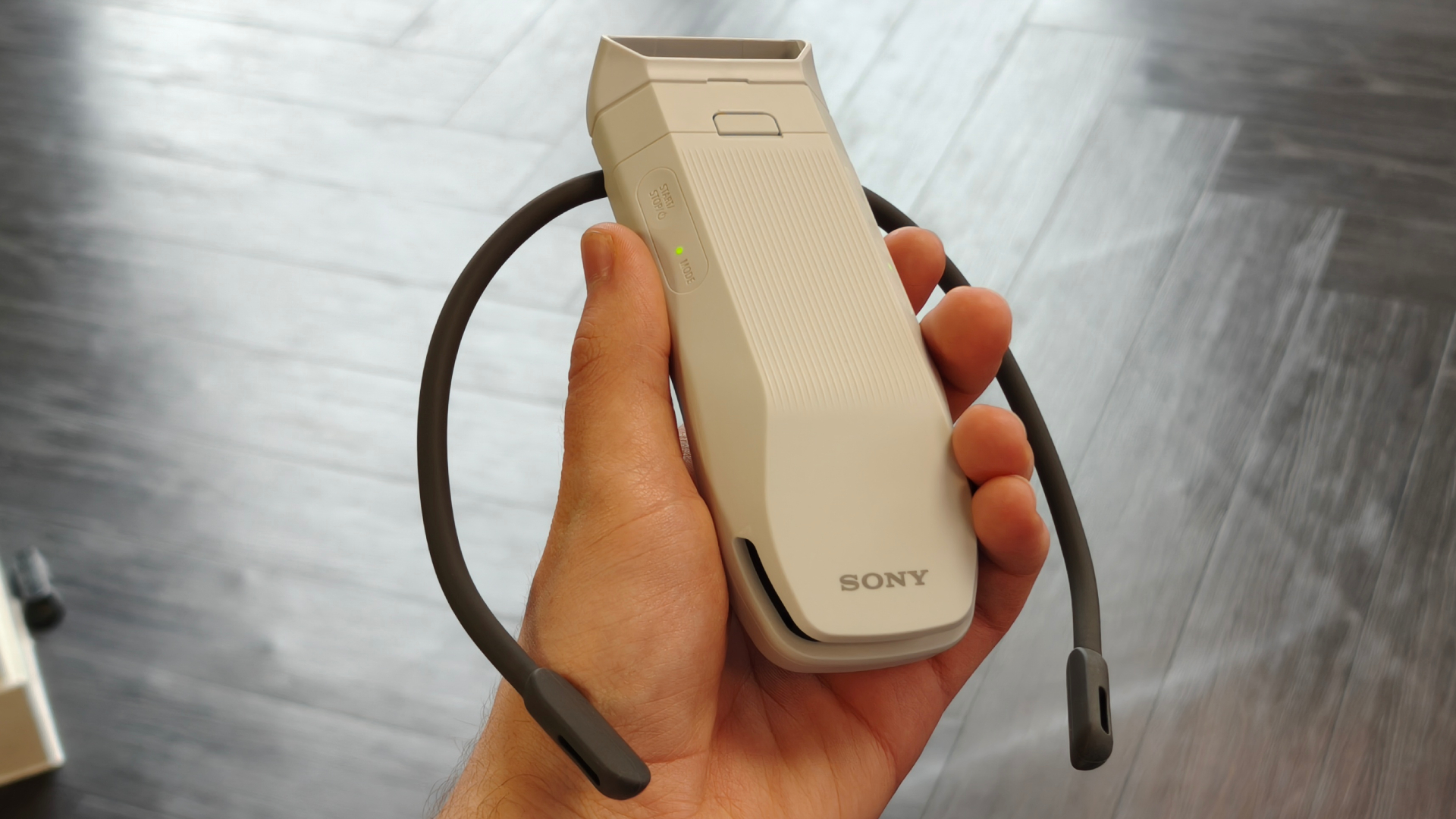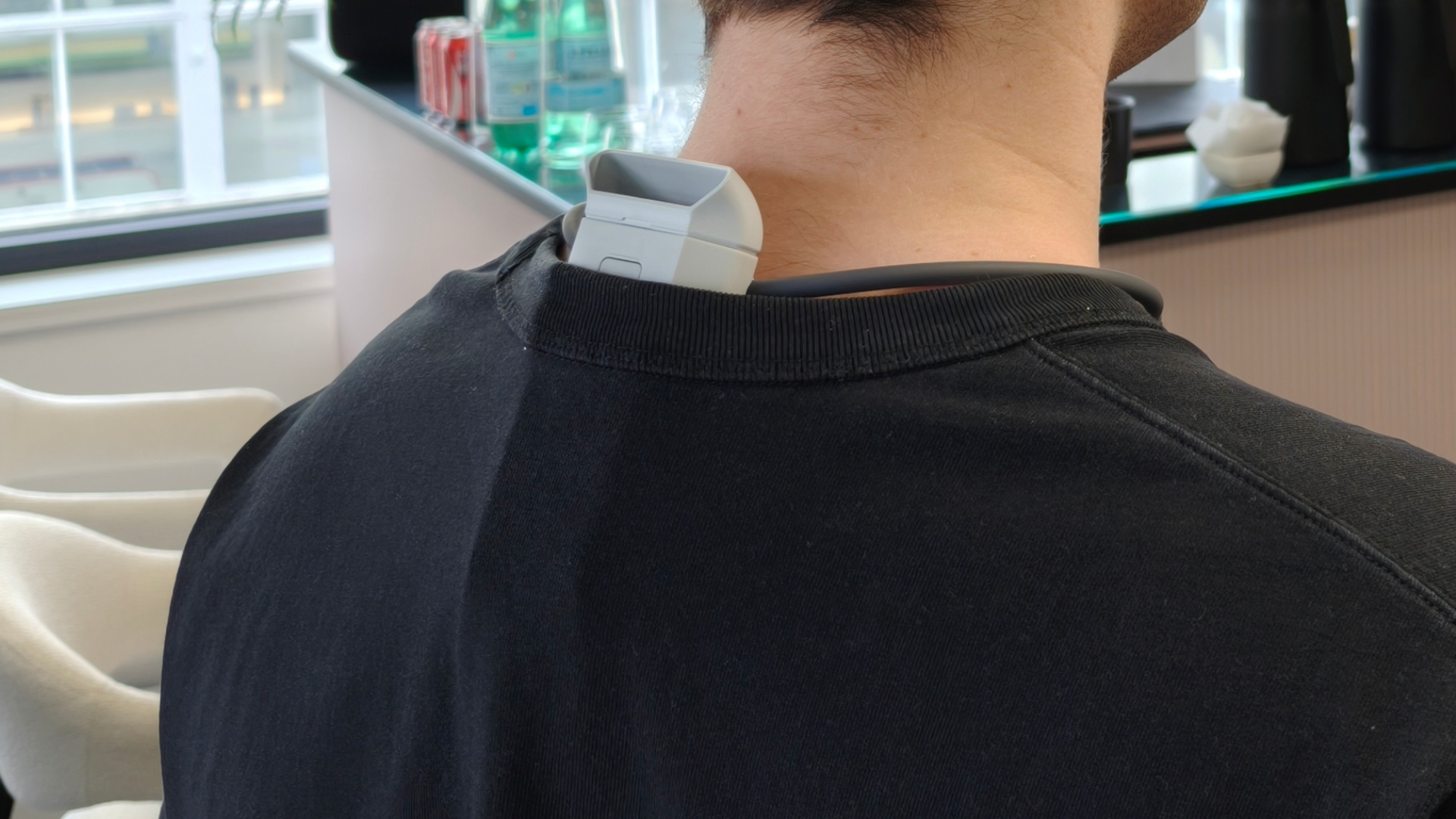Sony's new personal cooling device made me feel like a cyborg – but I don't think it's worth buying just yet

When you think of Sony, what comes to mind? I’m guessing most tech fans think of the PS5, Alpha cameras, Bravia TVs, and maybe even Sony Xperia phones.
Inversely, I’d wager that “wearable wireless temperature regulator” wouldn’t make that list – but that’s exactly what Sony offers with the Reon series of thermal devices.
The Reon concept basically gives your body temperature a control slider. The device sits on the back of your neck, with a plate of thermal material against your skin. It’s held in place by two thin bands that loop around to your collarbone.
Now, Sony has released the Reon Pocket Pro, a larger, more powerful version of last year’s Reon Pocket 5 that promises to deliver even better cooling and control.
I recently went hands-on with the Reon Pocket Pro at a Sony event – keep reading for a breakdown of the device’s key specs and functions, and my impressions of this one-of-a-kind gadget.
The Sony Reon Pocket Pro is a wearable thermal device that offers cooling and warming via two thermal modules, doubling the total contact area from the Reon Pocket 5.
The device can be operated with its built-in buttons or via a handy app that visualises the amount of cooling or warming applied with sliders, and it also comes with a small badge-like sensor that adjusts your experience based on sunlight, external temperature, and humidity.
Sign up for breaking news, reviews, opinion, top tech deals, and more.
Sony has provided us with an approximate price of £199 for the Reon Pocket Pro – we haven’t heard any launch details for the US or Australia just yet.
So, with the tech specs out of the way, what were my impressions of the Reon Pocket Pro?

Regarding the actual function of the device, I noticed a rapid change in temperature that I’m sure would have a decent effect on a hot day or in the hellish depths of the London Underground in summertime.
I also tried the 40-degree warming option, which had an immediate impact that I’m sure would be welcome through the UK’s cold winters.
Overall, I think the core concept of the Reon Pocket Pro is pretty fantastic – the idea of personal climate control mixed with the device’s Star Wars-like appearance had me feeling like a cyborg when I tried it on for the first time. It’s also very unique – there really is nothing else quite like it.
It’s also reasonably light. At 201g, the Reon Pocket Pro weighs a smidge more than the iPhone 16 Plus. Noticeable, sure, but not an issue.
However, I’m not sure if it was my posture or the way the neck straps were adjusted, but I couldn’t get the Reon Pocket Pro to sit in a way that felt correct during my few minutes of testing.
The device is built to follow the contours of your neck, but for me, it just didn’t feel comfortable. I can’t say I’d be able to forget I was wearing it, or keep it on through the length of a whole commute.
I’m a pretty tall and wide guy, so I’m no stranger to things not quite fitting me right, from headphones to living room furniture – but even so, I think some proper adjustability is a reasonable expectation from something that’s designed to be one-size-fits-all.
So, while I do think the Reon Pocket Pro is built from excellent ideas, I don’t think I can personally recommend one until the device gets some ergonomic updates. Of course, your experience may vary – let us know if you’re keen to try the Reon Pocket Pro in the comments below.
You might also like
- 5 outstanding tech reviews of the week: the sublime new Sony WH-1000XM6 headphones and Motorola's seriously stylish foldable
- Samsung hints at Galaxy Ring smart-home integration – and what looks like a new activity metric
- I've been wearing the Whoop MG for four days, and there's one thing I love about it – and one thing I really don't

Jamie is a Mobile Computing Staff Writer for TechRadar, responsible for covering phones and tablets. A lifelong tech-obsessive, Jamie began his writing career as a music blogger before studying journalism at Goldsmiths College, and joined TechRadar in 2024. He thinks the iPhone 5S is the greatest phone of all time, but is currently an Android user.
As well as reporting on the latest in mobile hardware, software, and industry developments, Jamie specialises in features and long-form pieces that dive into the latest phone and tablet trends. He can also be found writing for the site's Audio and Streaming sections from time to time, or behind the decks as a DJ at local venues around London.
You must confirm your public display name before commenting
Please logout and then login again, you will then be prompted to enter your display name.